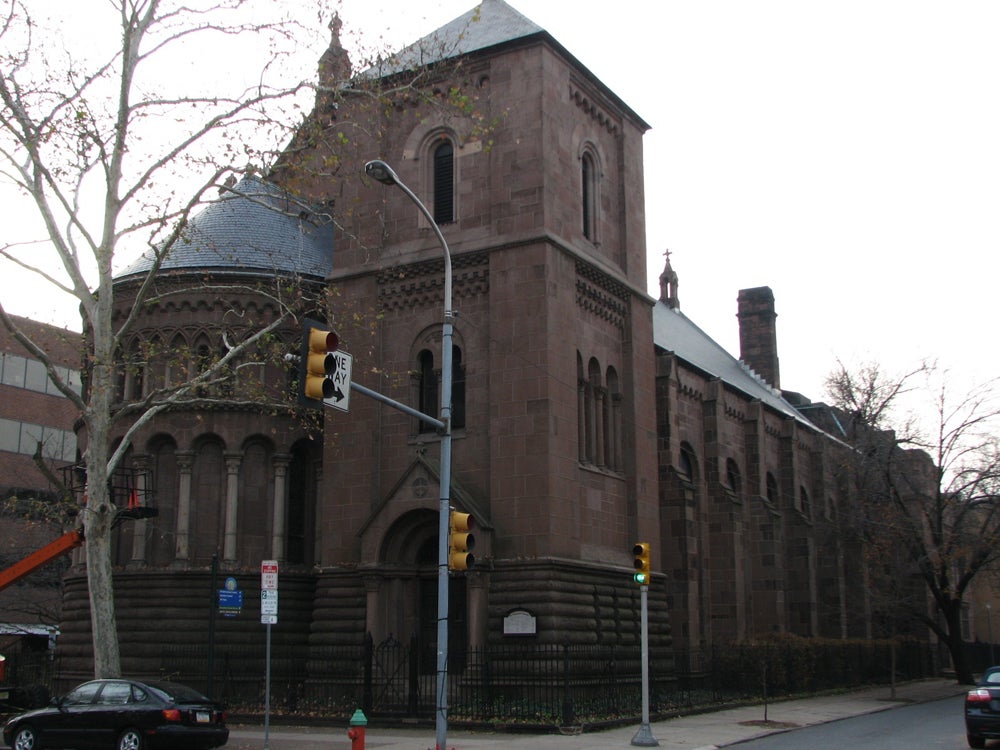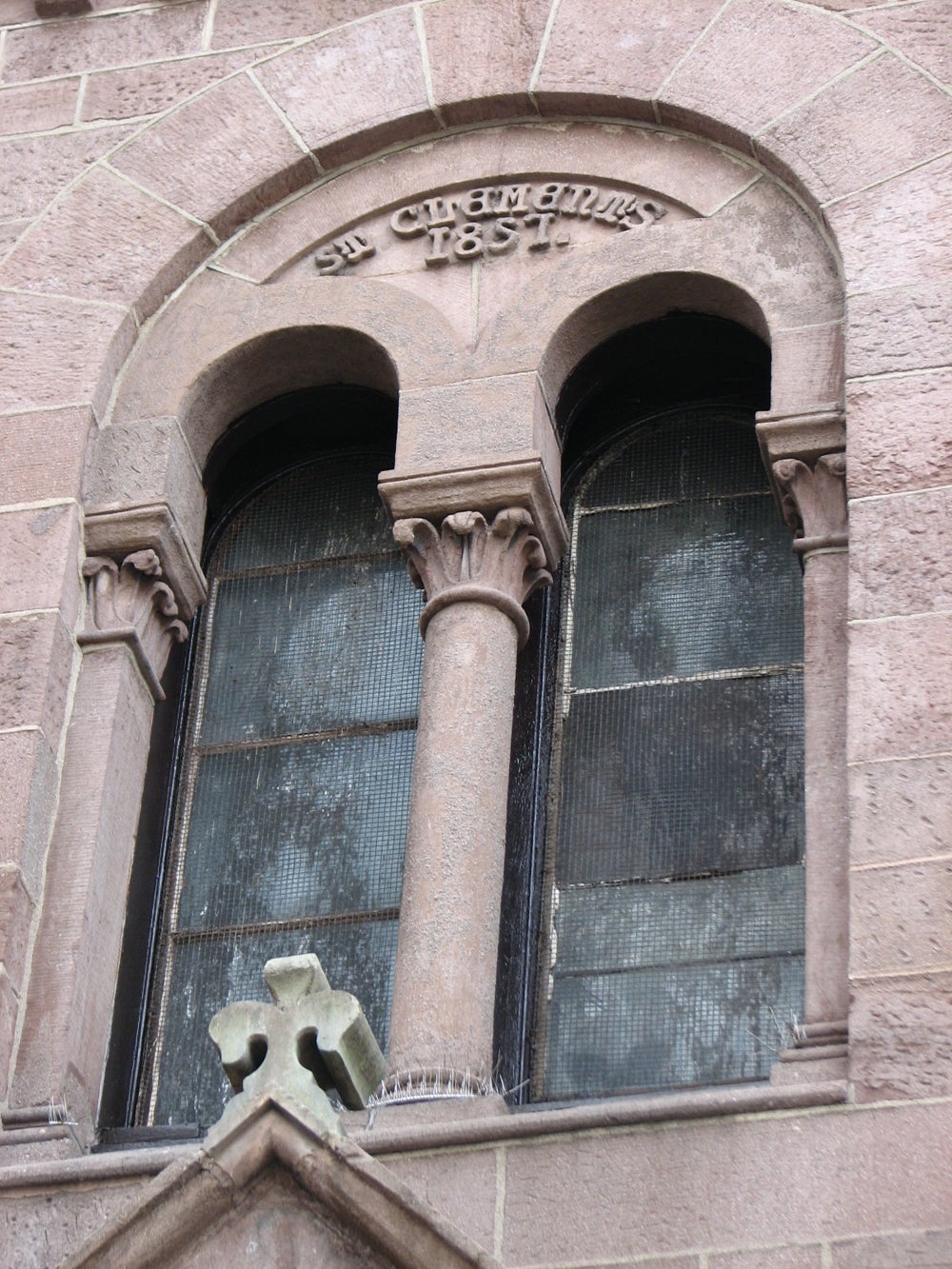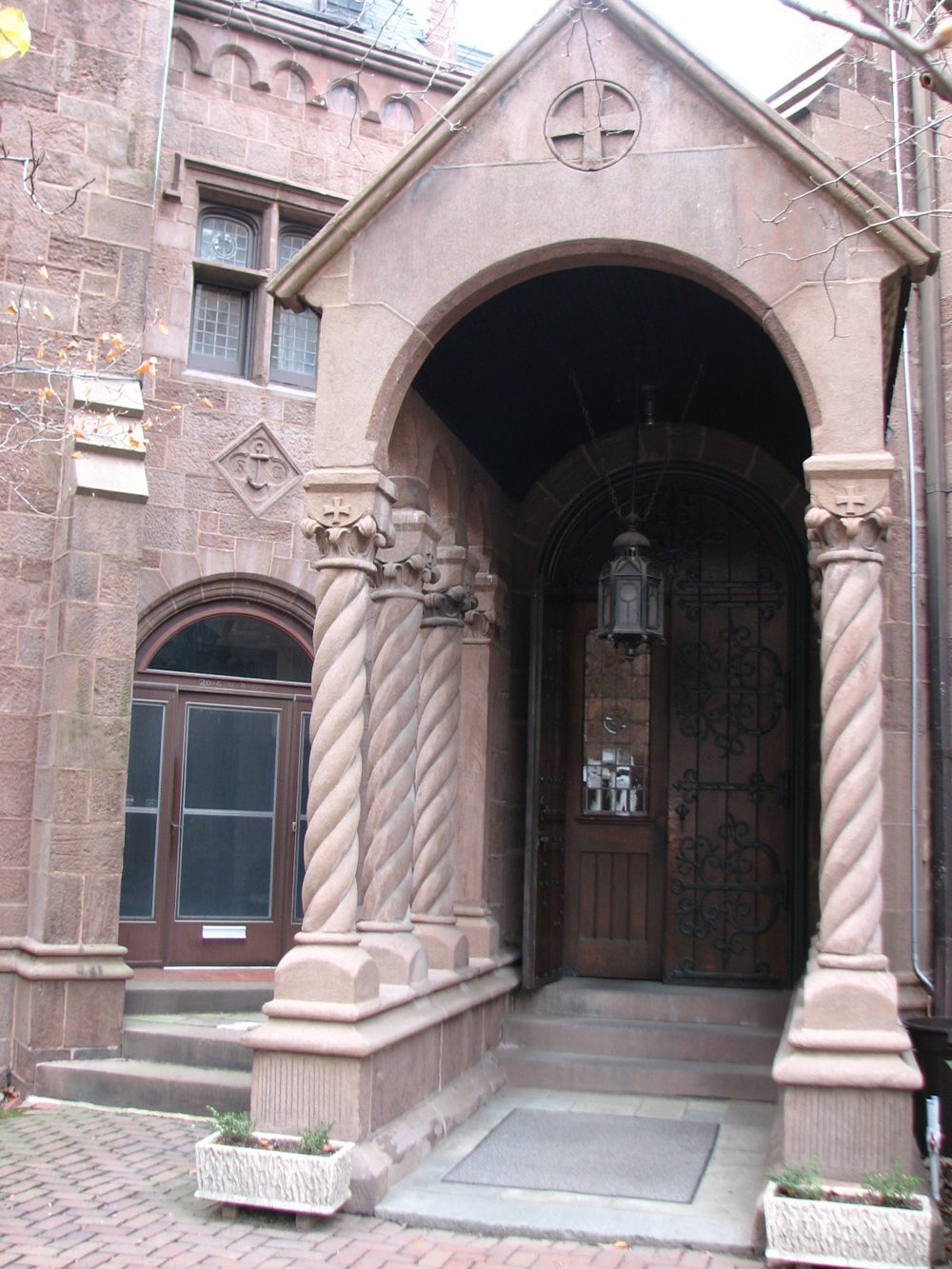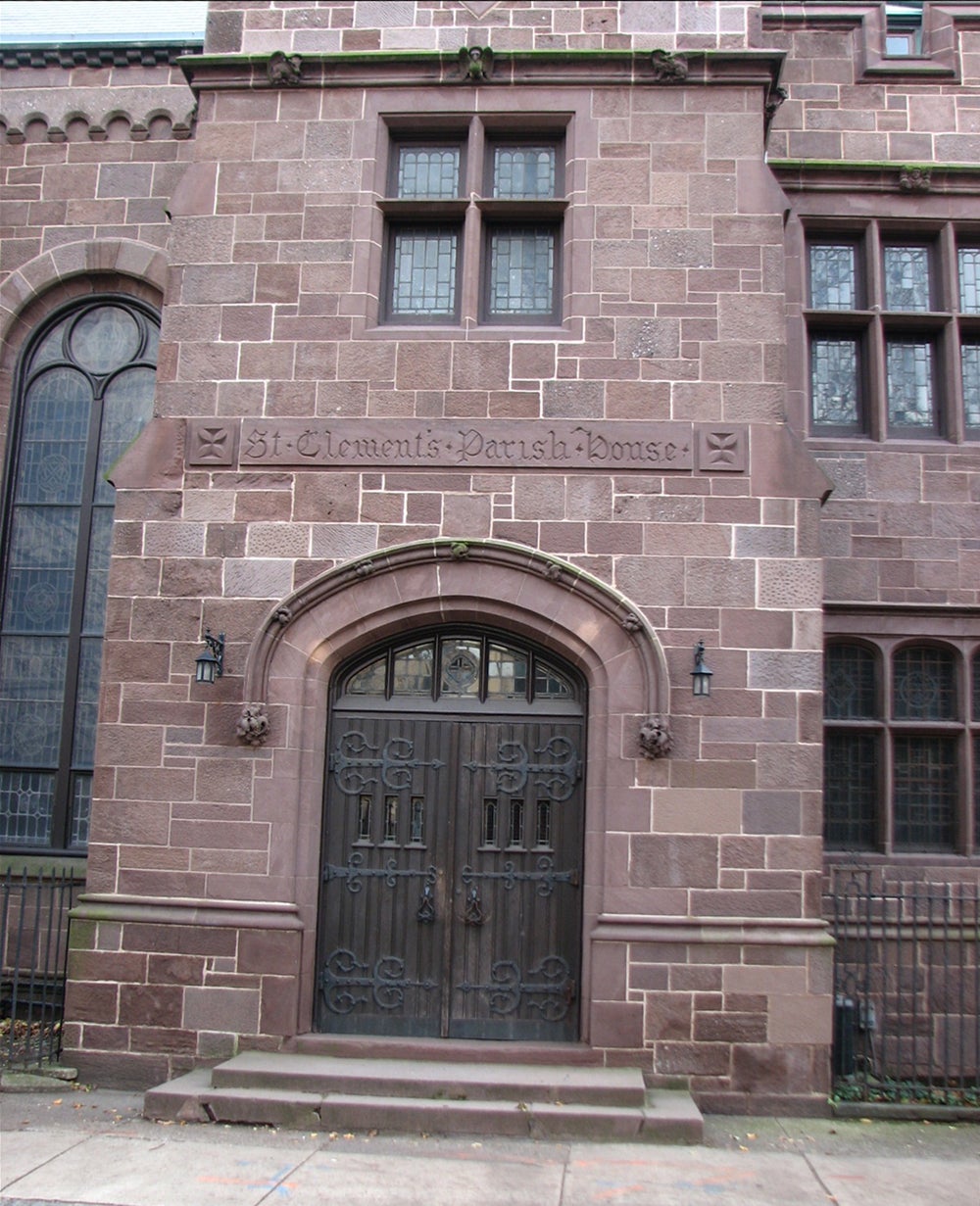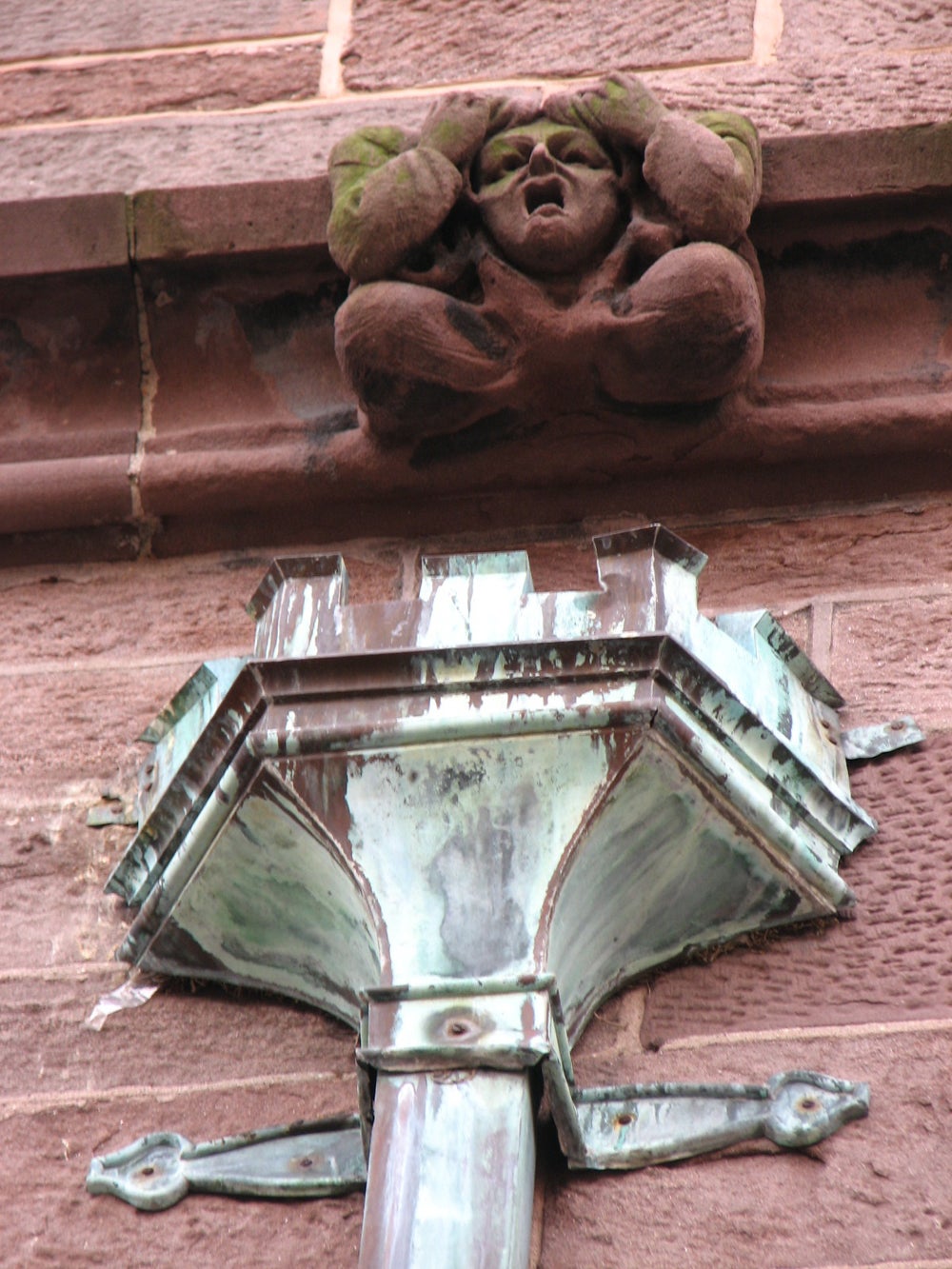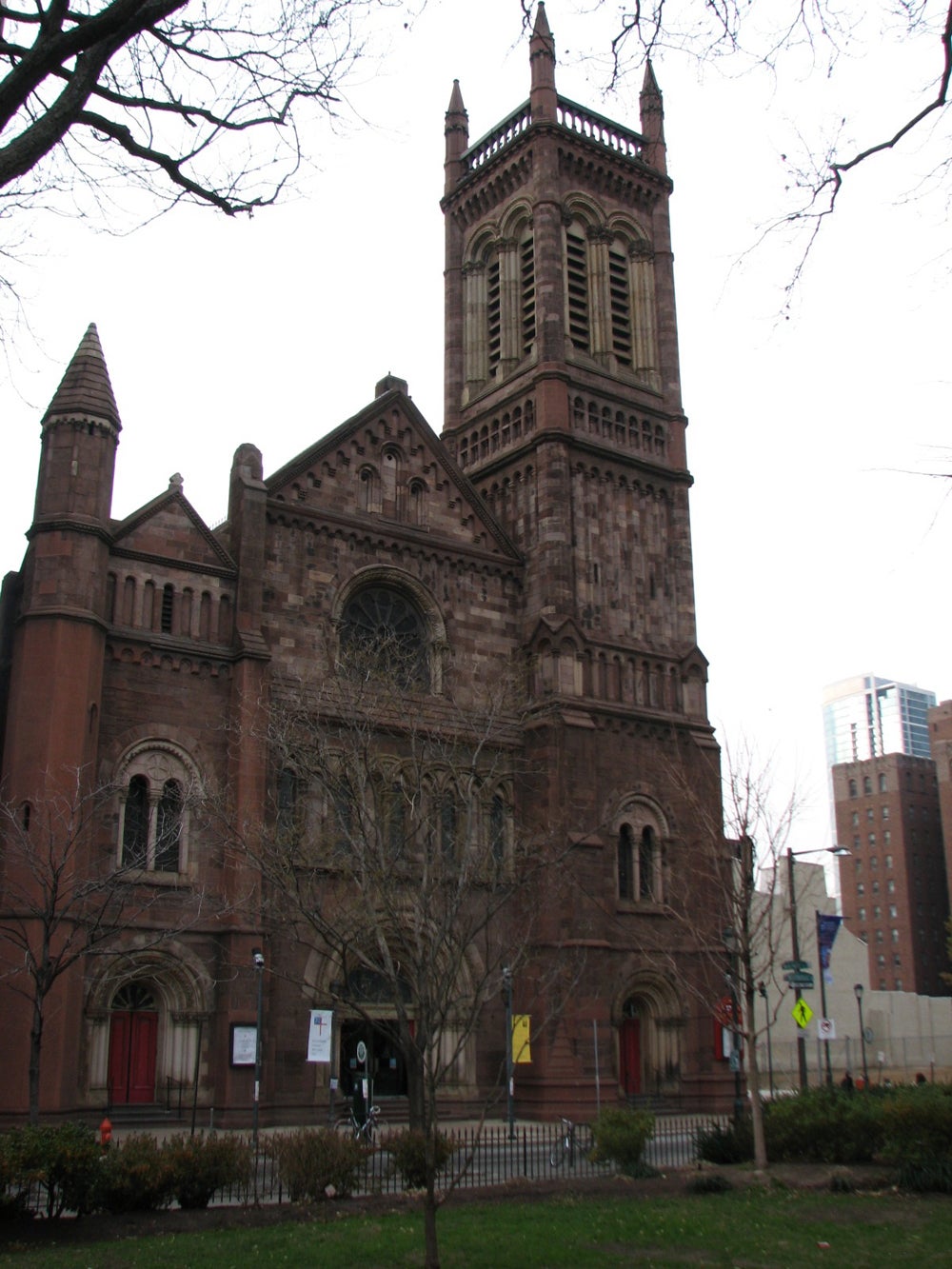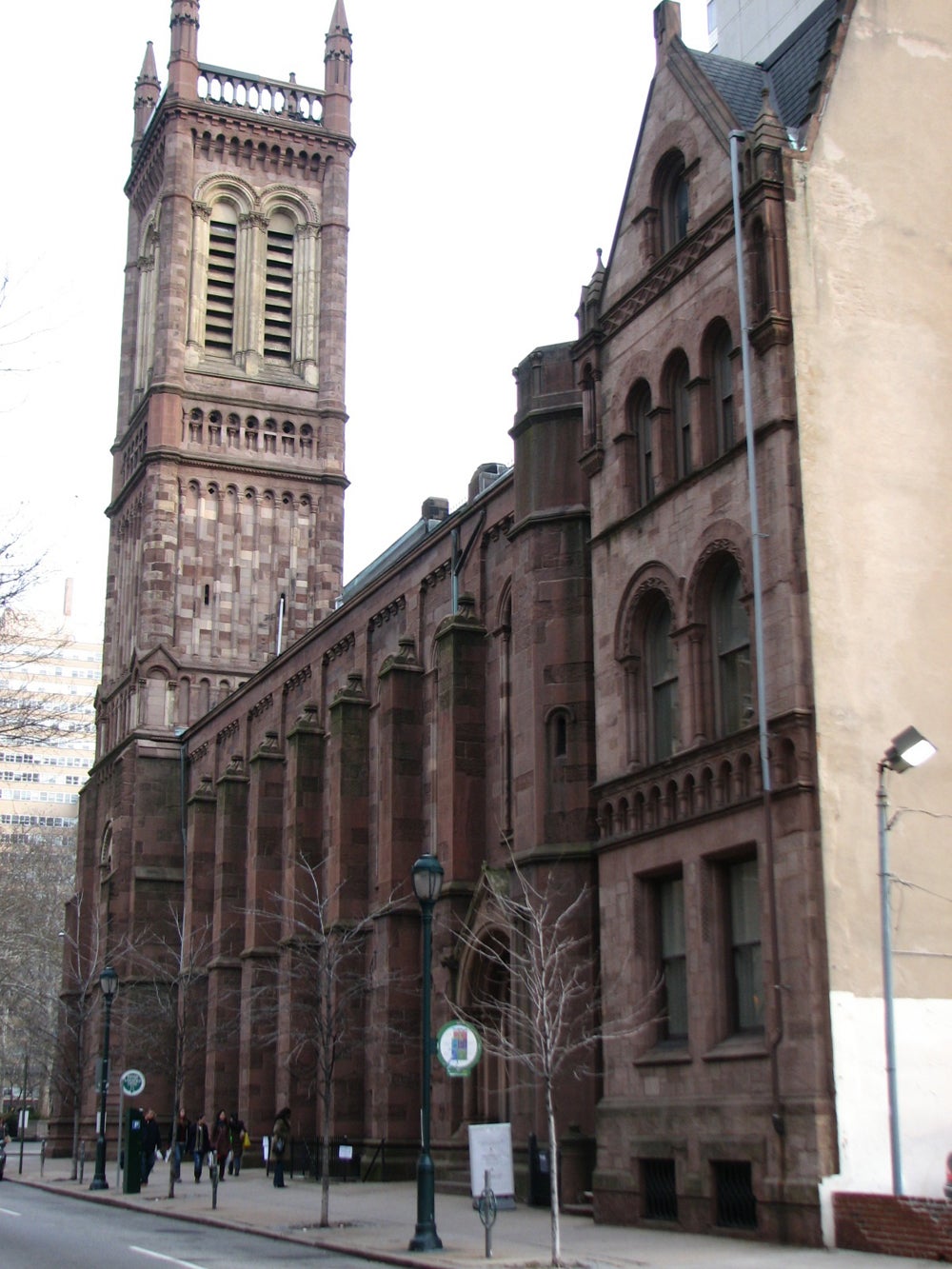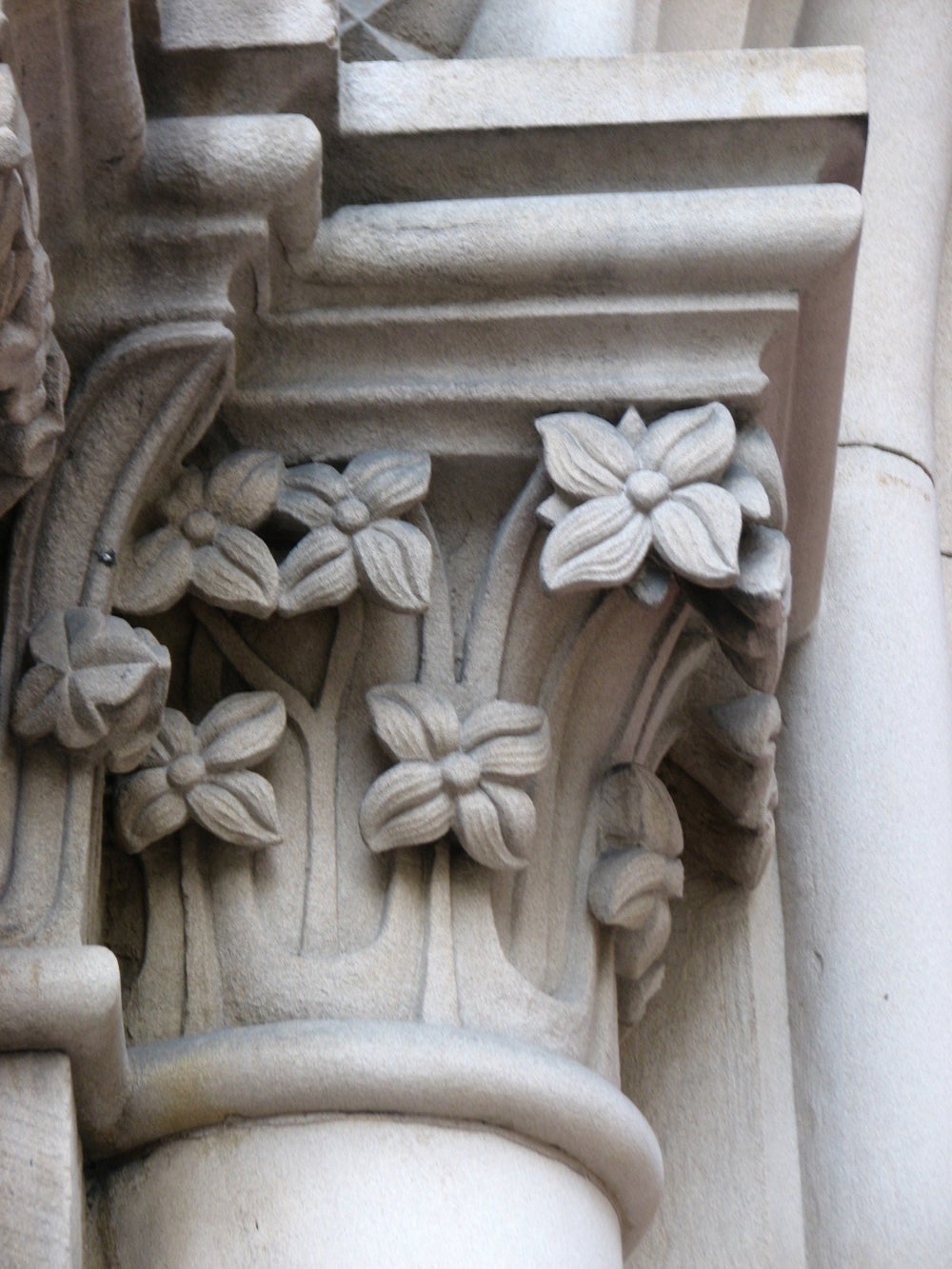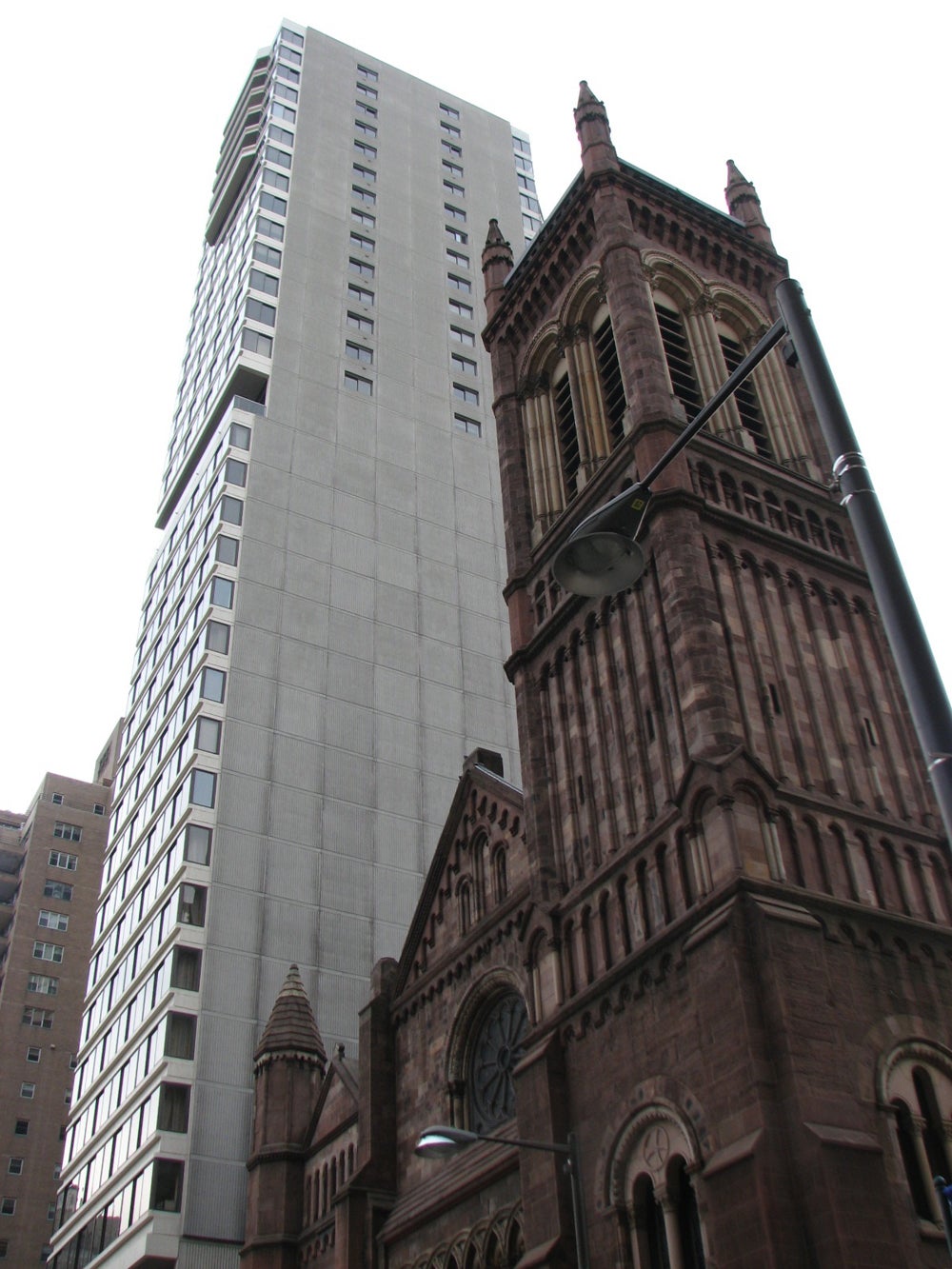Look Up! John Notman’s brownstone temples
“Look Up” is a PlanPhilly feature that encourages appreciation of our architectural and historical environment. Each week, the photo essay will focus on a different Philadelphia area neighborhood and its distinctive building styles and details, all of which make up the physical fabric of the city and region.
The Philadelphia region is blessed with glorious houses of worship, from Quaker meeting houses to Gothic cathedrals, from Old Swede’s Church to Wright’s Beth Sholom Synagogue, all filled this month with celebrations of the holidays. Among the region’s great 19th century architects of ecclesiastical buildings is John Notman, who designed the Gothic St. Mark’s Church on the 1600 block of Locust, but also built the first Italianate home in the U.S. for Bishop George Washington Doane in Burlington, N.J., and the first Renaissance Revival building in America, the Athenaeum on Washington Square.
From 1855 to 1859, Notman mastered the medieval Romanesque style in two Philadelphia churches. At 20th and Cherry Streets, he built the brownstone St. Clement’s Episcopal Church with Romanesque arches, semi-circular apse and bell tower. A 200-foot-high spire originally soared up from the tower, but was removed in 1869 because it proved too heavy for the foundation. The church underwent another alteration in 1929, when the city decided to widen 20th Street by 40 feet. Rather than demolish the church, the congregation had the 5,500-ton structure raised on steel beams and moved to its current location.
While St. Clement’s was being built, Notman was working on another brownstone, the Church of the Holy Trinity on Walnut Street at the northwest corner of Rittenhouse Square. Holy Trinity’s park façade features three arched entrances carved with geometric and foliate designs and, as at St. Clement’s, a dramatic tower. Over the years, additions to the church interior included Tiffany windows and skylight and Mercer terra cotta tiles.
“Look Up!” 19th Century luxe on Locust St.
“Look Up!: 20th Century evolution in East Falls
“Look Up!” Rural retreats in Northeast Philly
“Look Up!” Modernist lines on Haverford Ave.
“Look Up!” Chestnut Hill’s modernist gems
“Look Up!” The Art Deco Palace of Mt. Airy
“Look Up! An architect’s legacy on Spruce Street
“Look Up!” The French Village in Mt. Airy
“Look Up” and check out the nouveau mansions of North Broad
“Look Up” and check out elegant Southwark
“Look Up” and check out Henry Disston’s company town
“Look Up: and check out Spruce Hill
“Look Up” and check out Green Street
“Look Up” and check out West Laurel Hill
“Look Up” and check out Parkside
“Look Up” and check out Awbury Arboretum
“Look Up” and check out Nicetown
“Look Up” and check out Overbrook Farms
“Look Up” and check out Girard Estate
“Look Up” and check out Rittenhouse/Fitler Square
Contact the writer at ajaffe@planphilly.com.
“Look Up!” The Art Deco Palace of Mt. Airy
“Look Up! An architect’s legacy on Spruce Street
“Look Up!” The French Village in Mt. Airy
“Look Up” and check out the nouveau mansions of North Broad
“Look Up” and check out elegant Southwark
“Look Up” and check out Henry Disston’s company town
“Look Up: and check out Spruce Hill
“Look Up” and check out Green Street
“Look Up” and check out West Laurel Hill
“Look Up” and check out Parkside
“Look Up” and check out Awbury Arboretum
“Look Up” and check out Nicetown
“Look Up” and check out Overbrook Farms
“Look Up” and check out Girard Estate
“Look Up” and check out Rittenhouse/Fitler Square
WHYY is your source for fact-based, in-depth journalism and information. As a nonprofit organization, we rely on financial support from readers like you. Please give today.



